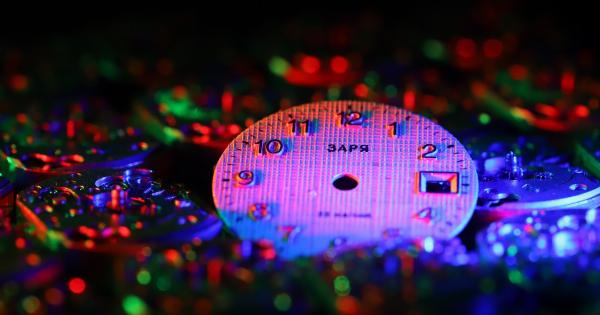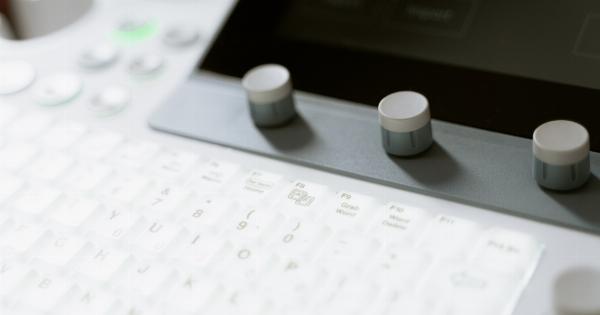Monitoring your heart rate during exercise is essential for maximizing your fitness goals and ensuring that you are working out at an appropriate intensity level.
By keeping track of your heart rate, you can gauge your cardiovascular health, measure your progress, and avoid overexertion.
The Importance of Heart Rate Monitoring
Before delving into the various methods of monitoring your heart rate, it’s crucial to understand why it is important:.
1. Assessing Your Fitness Level: Monitoring your heart rate during exercise helps you determine your current fitness level.
By recording your resting heart rate and tracking how it changes during physical activity, you can assess improvements in your cardiovascular health over time.
2. Maximizing Workout Efficiency: Understanding your target heart rate zones allows you to work out at the right intensity to achieve your fitness goals.
Whether it’s fat burning, endurance training, or improving cardiovascular fitness, maintaining a specific heart rate range can help you maximize the benefits of your workouts.
3. Avoiding Overexertion: Monitoring your heart rate helps you avoid overexertion during exercise. Pushing your heart rate too high for an extended period can lead to fatigue, muscle damage, or even career-threatening injuries.
By keeping an eye on your heart rate, you can ensure that you are exerting yourself within safe limits.
Methods of Monitoring Heart Rate During Exercise
There are several methods you can use to monitor your heart rate during exercise. Let’s explore each of them:.
1. Manual Pulse Measurement
The most basic method of monitoring your heart rate is by manually measuring your pulse. You can feel your pulse by placing your index and middle fingers on the radial artery in your wrist or the carotid artery in your neck.
Count the number of beats you feel within 15 seconds and multiply it by four to get your heart rate in beats per minute (BPM).
2. Wearable Heart Rate Monitors
Wearable heart rate monitors have become increasingly popular among fitness enthusiasts. These devices are typically worn around the wrist or chest and use sensors to measure your heart rate accurately.
Many models also offer additional features like tracking steps, calories burned, and sleep patterns, making them versatile fitness companions.
3. Chest Strap Monitors
Chest strap heart rate monitors consist of a strap that is worn around your chest and a sensor that detects your heart rate. The sensor picks up electrical signals from your heart, allowing for accurate monitoring.
These devices often provide real-time heart rate data, making them beneficial for high-intensity workouts and precise tracking.
4. Wrist-Based Heart Rate Monitors
Wrist-based heart rate monitors are integrated into fitness trackers or smartwatches. They use optical sensors to measure your heart rate by illuminating your skin and detecting blood flow.
While wrist-based monitors may not be as accurate as chest strap monitors during vigorous exercise or sudden movements, they are convenient for everyday fitness tracking.
5. Smartwatches with Heart Rate Monitoring
Many modern smartwatches come equipped with built-in heart rate monitoring capabilities. These devices use an optical sensor on the underside of the watch to measure your heart rate.
Additionally, they offer a range of other features like GPS tracking, music playback, and smartphone notifications, making them a popular choice for fitness enthusiasts.
6. Mobile Applications
A growing number of mobile applications can measure your heart rate using the camera of your smartphone. These applications utilize the smartphone’s built-in camera and flashlight to detect color changes in your fingertip caused by blood flow.
While convenient, the accuracy of these applications may vary, so it’s essential to choose a reliable and well-reviewed app.
7. Cardio Machines with Heart Rate Sensors
Many cardio machines, such as treadmills, ellipticals, and stationary bikes, come equipped with built-in heart rate sensors. These sensors are usually located on the handles or grips of the machines.
By gripping the sensors while exercising, you can monitor your heart rate directly from the machine’s display.
8. Group Fitness Heart Rate Tracking
Some fitness studios and gyms offer group fitness classes where participants wear heart rate monitors.
These heart rate monitors display real-time data on screens in the studio during the class, allowing you to monitor and optimize your intensity level based on your goals.
9. RPE (Rate of Perceived Exertion) Scale
An alternative method to monitor your exercise intensity level is by using the Rate of Perceived Exertion (RPE) scale. It assesses how hard you feel your body is working.
The RPE scale ranges from 6 to 20, with 6 being no exertion and 20 being maximal exertion. By tuning into your body and using the RPE scale, you can gauge your exertion level during exercise.
10. Heart Rate Monitor Watches
Heart rate monitor watches have been designed explicitly for monitoring heart rate during exercise. These watches provide real-time heart rate data and often include additional features like GPS tracking, distance measurement, and calorie calculation.
Heart rate monitor watches are suitable for athletes across various disciplines who want precise heart rate feedback during their workouts.
Conclusion
Monitoring your heart rate during exercise is a valuable practice for anyone aiming to improve their fitness level and ensure safe and effective workouts.
Whether you prefer a wearable device, a mobile application, or cardio machines with built-in sensors, there are numerous options available to help you track your heart rate accurately. By leveraging the power of heart rate monitoring, you can optimize your fitness regimen and attain your goals more effectively.





























